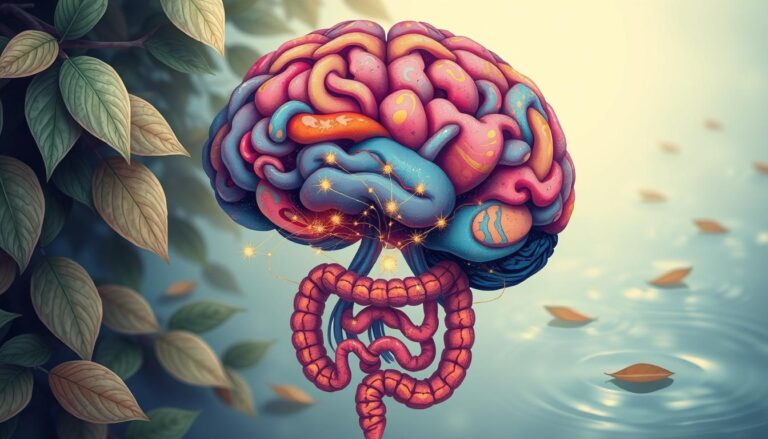Think of your physical being as an orchestra. In the magnificent orchestration of life each and every system and organ is important.
The key to good health is a coordinated effort much like a well rehearsed symphony. The key to achieving this balance is maintaining a healthy lifestyle and eating well.
Just as each instrument in an orchestra plays a crucial role in creating a beautiful harmony each aspect of our physical being must work together in order to achieve optimal health.

Read more: Seasonal Foods Healthy and Nutritious Choices
Just as a symphony must be well rehearsed and controlled our daily habits and choices must be intentional and mindful. By nourishing our bodies with nutritious foods and engaging in regular exercise we can ensure that our orchestra plays in perfect harmony creating a life filled with vitality and well being.
What is the relationship between healthy eating and physical well being?
Our bodies get their energy from food. When we nourish our bodies with the proper nutrients we keep our minds bright, our muscles powerful, and our immune system healthy. How effectively our instruments recuperate and how efficiently we utilize that fuel are both affected by lifestyle decisions including sleep, stress management, and physical exercise.
This essay will take a deep dive into the realm of lifestyle and nutrition, examining how the two intertwine to provide a harmonious framework for good health.
We will go into the fundamentals of a balanced diet the impact of physical activity the significance of rest and stress management and much more. With this information, you may become the conductor of your own health producing a magnificent symphony that will resound throughout your life.
The Power on Your Plate Building a Balanced Diet
A balanced diet is the cornerstone of good health. It supplies the key elements carbs protein lipids vitamins, and minerals-that our bodies require to operate efficiently.
Without a balanced diet, our bodies may not receive the necessary nutrients to function properly leading to potential health issues such as fatigue a weakened immune system, and poor digestion.
By incorporating a variety of foods from all food groups we can ensure we are getting the essential nutrients needed for optimal health and well being. Making healthy food choices can also help reduce the risk of chronic diseases such as heart disease diabetes, and certain types of cancer.
Carbohydrates:
Our major source of energy carbohydrates, comes in two forms simple and complex.
Simple carbs found in sugary beverages and processed meals deliver a rapid rush of energy but leave us feeling tired soon after. Complex carbs found in whole grains fruits, and vegetables release energy slowly and provide prolonged sustenance.

Read more: Carbohydrates Your Diet Guide 10 Examples
By incorporating more complex carbohydrates into our diet we can maintain steady energy levels throughout the day and avoid the crash that often comes with consuming simple carbs.
Additionally complex carbs are rich in fiber vitamins, and minerals making them a healthier choice for overall well being. Swapping out simple carbs for complex carbs can lead to improved digestion better weight management, and increased feelings of satiety.
Protein:
Protein, the building block of life is needed for creating and repairing tissues generating enzymes and hormones, and sustaining a healthy immune system.
Lean protein sources include fish chicken beans lentils, and nuts. These sources are not only low in unhealthy fats but also rich in essential nutrients like vitamins and minerals.

Read more: Debunking the Protein Hype How Much Is Too Much?
Incorporating lean proteins into your diet can help you feel full longer, support muscle growth and repair, and promote overall well being. Remember to vary your protein sources to ensure you are getting all the necessary amino acids your body needs to function properly.
Fats:
Not all fats are created equal. Healthy fats, including those found in avocados fatty fish olive oil and nuts offer vital fatty acids enhance brain function, and induce satiety. Limit harmful fats such as saturated and trans fats found in processed meats fried meals, and baked products.
These unhealthy fats can increase the risk of heart disease and obesity. It is important to read labels and choose foods that are low in these harmful fats. By making smart choices and incorporating more healthy fats into your diet you can improve your overall health and well being. Remember moderation is key when it comes to consuming fats.

Read more: The Benefits of Healthy Fats
Vitamins and Minerals:
These micronutrients play a key role in numerous bodily activities. Fruits, vegetables, and whole grains are good sources of a range of vitamins and minerals. Consuming a variety of these foods ensures that you are getting all the necessary nutrients for your body to function properly.
Some vitamins, such as Vitamin C and Vitamin D, are essential for boosting the immune system and maintaining strong bones. Minerals like iron and calcium are crucial for energy production and bone health. It is important to have a balanced diet to ensure you are getting all the vitamins and minerals your body needs.
Creating a Balanced Plate
When assembling your meal, try for diversity and emphasize complete, unprocessed foods. Here’s a useful guide Include a variety of colorful fruits and vegetables whole grains, lean proteins, and healthy fats.
Opt for foods that are rich in vitamins minerals, and antioxidants to support overall health and well-being. Remember to drink plenty of water throughout the day to stay hydrated and energized. By prioritizing nutrient dense foods you can create a balanced and satisfying meal that nourishes your body and fuels your day.
Half your plate
Fill half your plate with non starchy veggies, including leafy greens broccoli peppers, and carrots. One quarter of your plate: Dedicate this area to lean protein sources.
One-quarter of your plate
Choose whole grains like brown rice, quinoa, or whole-wheat pasta. Healthy fats: Include a modest quantity of healthy fats like avocado or a drizzle of olive oil.
The Power of Movement Keeping Your Body in Tune
Physical exercise is another key part of the health symphony. Exercise develops our muscles and bones improves cardiovascular health promotes mood, and helps control weight. Here are some significant advantages of regular exercise:
Improved cardiovascular health
Exercise strengthens your heart and improves circulation, lowering your risk of heart disease stroke, and high blood pressure.
- Stronger muscles and bones Regular physical activity helps build and maintain muscle mass, improves bone density, and reduces the risk of osteoporosis.
- Weight management Exercise helps you burn calories and maintain a healthy weight.
- Mood booster Exercise releases endorphins hormones that have mood-lifting and stress-reducing effects.
- Sharper mind Physical exercise enhances blood flow to the brain, which may promote cognitive function memory, and learning.
Finding Your Rhythm Making Exercise a Habit
The key to the advantages of exercise is consistency. Aim for at least 150 minutes of moderate intensity aerobic exercise or 75 minutes of vigorous intensity aerobic activity every week. Strength training routines that engage all main muscle groups are also vital. Here are some suggestions to include fitness in your routine:
Find activities you enjoy
Explore diverse hobbies like dance swimming, biking, or team sports. Choose something you find entertaining to boost the probability that you’ll continue with it. Don’t be afraid to try new things and step out of your comfort zone.
Take a class or join a club to meet new people who share your interests. Remember, the key is to have fun and stay active so don’t be afraid to experiment until you find the perfect fit for you. Whether it’s a solo activity or a group endeavor staying active and enjoying what you’re doing is crucial for maintaining a healthy lifestyle.
Start cautiously and progressively increase
Don’t attempt to accomplish too much too quickly. Begin with a simple regimen and progressively increase the time and intensity as your fitness improves. Listen to your body and pay attention to any signs of fatigue or discomfort.
It’s important to challenge yourself, but it’s equally important to avoid injury by pushing too hard. By gradually building up your fitness level, you’ll be able to reach your goals safely and effectively. Remember, slow and steady wins the race.
Make it a social activity.
Exercising with friends or family may make it more pleasurable and provide an incentive. Setting up a regular routine to meet up for a run or workout class can help everyone stay motivated and accountable.

Read more: What’s Your Weight Loss Routine?
Plus having a support system of loved ones can make the experience more enjoyable and fun. Whether it’s a weekly yoga session or a weekend hike exercising together can strengthen relationships and create lasting memories. So grab a buddy and get moving!
The Restorative Symphony Sleep and Stress Management
Just like even the most brilliant symphony requires rest our bodies need appropriate sleep and proper stress management to perform efficiently. Without adequate rest and stress management our bodies can become overwhelmed and unable to function at their best.
This can lead to a variety of health issues both physical and mental. By prioritizing sleep and finding healthy ways to manage stress we can ensure that our bodies are able to operate at their peak performance levels.
Sleep: The Rehearsal for a Stellar Performance
During sleep, our bodies heal tissues, consolidate memories, and regulate hormones. Chronic sleep deprivation may have a harmful influence on our health, increasing the risk of obesity, heart disease, diabetes, and even mental health concerns like anxiety and depression.
How Much Sleep Do We Need?
Sleep demands vary based on age but most people need 7-8 hours of excellent sleep every night. Here are some strategies to improve sleep:
Establish a consistent sleep schedule.
Go to bed and get up at the same time each day, including on weekends.
Create a peaceful bedtime routine: take a warm bath, read a book or listen to quiet music before bed. This will help signal to your body that it is time to wind down and relax. Avoid screens and bright lights at least an hour before bed to allow your body to produce melatonin the hormone that regulates sleep.
Practicing relaxation techniques such as deep breathing or meditation can also help prepare your mind and body for a restful night’s sleep. By incorporating these habits into your bedtime routine, you can improve the quality of your sleep and your overall well-being.
Optimize your sleep environment:
Ensure your bedroom is dark quiet, and cool. Limit screen time before bed. The blue light produced by electronic devices may interfere with sleep. Avoid coffee and alcohol close to bedtime. Both drugs can disturb sleep patterns.
Try incorporating relaxation techniques such as deep breathing or meditation before bed to help calm your mind and promote better sleep.
Additionally establishing a consistent bedtime routine can signal to your body that it is time to wind down and prepare for sleep. By creating a conducive sleep environment and practicing good sleep hygiene habits, you can improve the quality of your rest and wake up feeling refreshed.
Stress Management Quieting the Discord
Stress is a normal part of life but chronic stress can wreak havoc on our health weakening our immune system raising inflammation, and leading to many health issues. It’s important to find healthy ways to manage stress in order to prevent these negative effects on our well being.
Regular exercise meditation, and spending time with loved ones can all help to reduce stress levels and improve overall health. Additionally, seeking support from a therapist or counselor can provide valuable coping strategies for dealing with chronic stress. By taking proactive steps to manage stress we can protect our health and well-being in the long run.
Healthy Ways to Manage Stress:
There are numerous effective techniques to handle stress, and what works for one person may not work for another. Here are some methods to explore mindfulness meditation exercise deep breathing exercises spending time in nature, practicing gratitude talking to a therapist, journaling, and engaging in hobbies or activities that bring joy.
It’s important to experiment with different strategies and find what works best for you in managing stress and promoting overall well being. Remember it’s okay to seek help and support when needed, and taking care of your mental health is just as important as taking care of your physical health.
- Relaxation techniques Practices like deep breathing, meditation, and progressive muscle relaxation may help quiet the mind and body. Physical activity Exercise is a fantastic method to reduce stress and enhance mood
- Mindfulness Focusing on the present moment may help decrease stress and anxiety. Connecting with others Spending time with loved ones talking to a therapist or joining a support group can provide social support and help manage stress.
Finding Your Perfect Harmony Putting It All Together
A balanced diet, regular exercise, enough sleep, and efficient stress management are the pillars of a healthy lifestyle. By concentrating on these factors, you may build a beautiful symphony of health that will vibrate throughout your life.
Remember, minor modifications may lead to large improvements. Start by implementing minor modifications into your routine, such as adding a portion of veggies to your lunch or taking a short walk during your break. Gradually these tiny improvements will become habits leading to a healthier and happier you.
FAQs
What if I don’t have time to make nutritious meals? There are numerous healthy and simple meal choices available. Explore frozen veggies pre cut fruits, and lean protein sources that may be rapidly cooked.
I detest exercising! What can I do? Focus on discovering hobbies you like. Start with brief bursts of activity throughout the day and progressively increase the time and intensity as you grow fitter.
I have difficulties sleeping. How can I help? Practice proper sleep hygiene described previously and visit your doctor if sleep issues continue.
Conclusion
Living a healthy lifestyle is not about fads or fast cures. It’s about constructing a sustainable symphony of nutrition exercise sleep, and stress management that works for you. By making little adjustments and concentrating on consistency you may build a beautiful symphony of health that will enable you to live a long and active life.
Find brief bursts of movement: Can’t commit a huge chunk of time? Break it down! Take the stairs instead of the elevator and go for a





